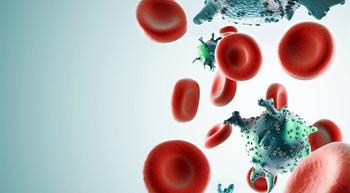
Liquid Biopsies May Identify Risk for Blood Cancers and Personalize Care for Patients With Solid Tumors
Compared with tissue biopsies, liquid biopsies performed with blood samples may inform cancer teams of a patient’s increased risk for blood cancers, although all patients may not have this risk.
Liquid biopsies may identify patients with solid tumors who are recommended for additional tests to determine whether they’re at increased risk for developing myeloid malignancies (cancer that forms in bone marrow) or hematological (blood) diseases, according to recent study results.
Although some patients with solid tumors in this study received a diagnosis of a myeloid malignancy or other hematologic disorder, this does not mean that all patients had this increased risk.
“We don’t have to scare patients about the fact that a great proportion of them have a risk for developing hematologic cancer,” Dr. Marco Tagliamento, a medical oncologist at Gustave Roussy in Villejuif, France, said in an interview with CURE®. “We are just saying that in the dedicated case, we can use this information to discuss if, in that specific case, we could add something to our management.”
In this study, researchers assessed data from 1,416 patients with treatment-naïve or pretreated advanced solid cancer who underwent at least one liquid biopsy with next-generation sequencing.
Tagliamento explained that a liquid biopsy may provide similar information to a tissue biopsy but in a less invasive manner.
“The good side of performing a liquid biopsy is that it is alternative to a tissue biopsy, which means that we can perform a blood test, so it’s less invasive for the patient,” he said. “We can perform on the blood some complicated analyses that can reveal information that we usually take by biopsy performed on the tissue. So we can spare the tissue biopsy in some cases. And we can get the same or also other information in different ways just from a blood sample.”
Results of the liquid biopsy determined whether a patient should be referred for a hematology consultation or at least discussed with their health care provider. In particular, patients who had specific genetic mutations — including JAK2 or MPL — were sent for further testing with a hematology specialist.
“We’re talking about some patients; not all patients with cancer have this (genetic) alteration,” said Tagliamento. “So for selected patients, we can decide on a case-by-case evaluation to go further with some hematologic tests that can reveal, for example, a hematologic disorder that can give a risk for having some problems during non-oncological treatments like anemia or an alteration in the blood counts, and can also, during their life, expose them to a higher risk of developing a hematologic cancer.”
Of the patients with solid tumors who underwent liquid biopsy, 8% of them carried at least one mutation that led to their high risk for developing a myeloid hematologic disorder. In addition, 45 patients (40%) were indicated for a hematology consultation. This led to five patients who received a confirmed diagnosis of a malignant myeloid disorder including one patient with chronic myelomonocytic leukemia (a type of cancer that starts in blood-forming cells of bone marrow and enters the blood), two patients with essential thrombocytopenia (an increased number of thrombocytes, or platelets, in the blood without a known cause) and two patients with myelodysplastic syndrome (a cancer when bone marrow does not produce enough healthy blood cells, which leads to abnormal cells in blood and/or bone marrow).
“We found that when we perform the molecular profile of solid tumors by this approach, we can get some collateral information that can be used to give to patients personalized care based on the fact that we can find sometimes some alteration in blood that can confer a higher risk of developing hematologic disorders” Tagliamento said.
Findings from this study were presented as a poster at a recent international cancer conference.
For more news on cancer updates, research and education, don’t forget to




